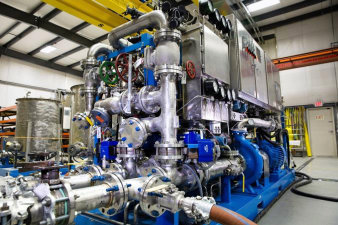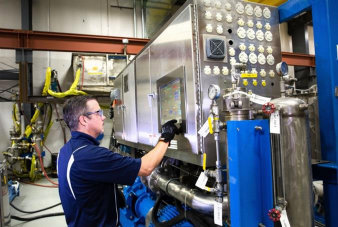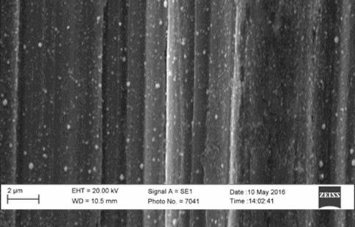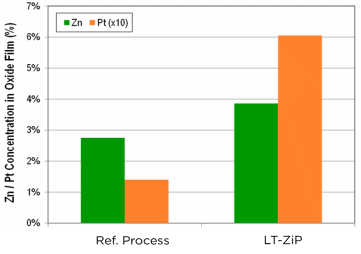Background
Chemical decontamination is routinely performed to remove activated corrosion products from boiling water reactor (BWR) plant piping while simultaneously reducing plant dose rates. This process was developed for commercial use in the early 1980s, and has since been successfully applied by Westinghouse to more than 300 BWR system decontaminations.
While chemical decontamination is generally effective for these objectives, plant dose rates may quickly return to pre-decontamination levels as piping recontaminates over the next few operating cycles. Westinghouse has been exploring methods to be used in combination with chemical decontamination that would reduce the rate of piping recontamination.
At some BWRs, platinum has been deposited at low temperature after decontamination to protect plant piping from intergranular stress corrosion cracking (IGSCC). Low temperature platinum deposition has also been shown to mitigate piping recontamination rates. However, many factors influence recontamination rates, and deposition of platinum alone is not always effective in mitigating recontamination (results vary depending on plant conditions maintained, particularly during early operation following startup).
Description
LT-ZiP is a process, offered by Westinghouse through an exclusive partnership with Dominion Engineering (DEI), which deposits both zinc and platinum on BWR plant piping at low temperature following chemical decontamination. The process is applied in a similar manner to other post-decontamination treatments, and provides ongoing IGSCC protection and more robust protection against piping recontamination following chemical decontamination.
Key Features
- Oxides formed upon plant restart following chemical decontamination and LT-ZiP are enriched in Zinc (Zn) and Platinum (Pt) (which inhibits Co-60 uptake)
- The LT-ZiP process leverages proven approaches to mitigate IGSCC following decontamination
- All chemicals utilized are already qualified for use within BWR primary circuits
Benefits
- Sustains low dose rates following chemical decontaminations at BWRs
- Provides added protection against piping recontamination, even in the case of unexpected plant conditions (e.g., transients, elevated reactor water Co-60 levels, etc.)
- Mitigates IGSCC until online noble metal chemical addition can be reinitiated
- Compatible with other chemistry practices such as noble metal chemical addition
Experience
Westinghouse has more than 30 years of global chemical decontamination and effluent waste processing experience, supporting operating and decommissioning nuclear power plants, as well as U.S. Department of Energy and National Lab sites. Our variety of processes and systems allows Westinghouse to offer customized solutions suited to a customer’s specific need.
Westinghouse has performed more than 300 BWR system decontaminations including all operating systems, fuel pool cooling (FPC) systems, recirculation pumps, moisture separators and FPC and reactor water cleanup (RWCU) heat exchangers.
With this broad experience we typically achieve a greater than 90 percent activation removal rate, resulting in personnel risk reduction (lower personal protective equipment and protocol costs) and significant decreases in cost of waste disposal by enabling classification reduction.

Westinghouse has developed a variety of chemical decontamination processes and skid-mounted equipment, such as that shown above which is capable of processing system volumes greater than 25,000 gallons.

Westinghouse chemical decontamination services, combined with our new LT-ZiP process, can provide continuous protection against intergranular stress corrosion cracking (IGSCC) while lowering recontamination rates.

Zn and Pt surface coverage after LT-ZiP. Surface examination by Scanning Electron Microscopy (SEM) at 5,000-times magnification.

Oxides formed at BWR operating conditions after LT-ZiP are enriched in Zn and Pt. Surface examination by X-ray photon spectroscopy (XPS).















